solarpower
Latest

Six places where renewable energy is cheaper than fossil fuels
By Cat DiStasio In the race to reduce the world's reliance on fossil fuels, cost is a huge factor. It's taken years, but advances in technology and increases in both efficiency and output have helped bring down the expense of renewable energy, which has in turn increased demand. Globally, fossil fuels are still cheaper than these alternative sources, but there are a few places around the world where clean energy is winning, dollar for dollar. Sometimes, too, there's so much of it that the market price drops to zero. With the cost of renewable energy getting lower by the year, if not the month, environmental advocates are hopeful that energy sources like solar and wind power can eventually edge out fossil fuels entirely. Let's take a look at some of the locales where renewable energy is proving that a clean world doesn't have to be more expensive.
Inhabitat12.10.2016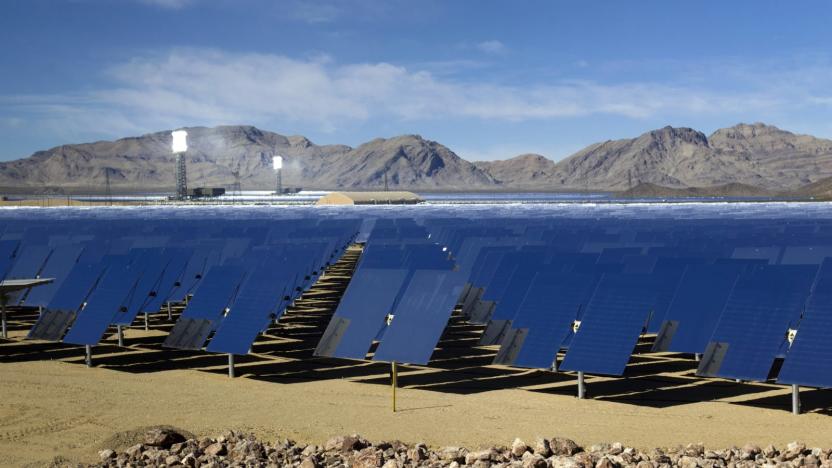
Google expects to run solely on renewable energy in 2017
Google has made it a point to run as much of its business on renewable energy as possible, and it looks like the company is close to reaching its ultimate goal. The internet pioneer now expects that all of its offices and data centers will be relying on purchased solar or wind power by some point in 2017. This isn't the same as directly powering facilities with eco-friendly energy (logistics and the nature of electrical grids makes that difficult), but it does mean that Google is funding enough projects to offset its massive power demands -- 5.7 terawatt-hours in 2015.
Jon Fingas12.06.2016
Solar beads can make some very cool lamps and flashlights
Conventional solar panels aren't exactly the prettiest objects on the planet, which is why companies like Tesla, SRS Energy and SunTegra have been focusing on blending this technology into roof tiles. As for those who don't have a roof or land to spare, Japan's Kyosemi Corporation has come up with an alternative solution that can let windows and glass walls soak up solar power as well. The magic ingredient? Just a web of "Sphelar" solar cell beads -- each with a diameter of 1.2 mm -- lined up inside any transparent substrate, meaning it can come in any shape or form while letting light travel through the gap between beads. Better yet, due to the spherical nature of these cells, they can capture light from almost any angle -- to the point where they can deliver a higher cumulative output than their conventional counterparts, according to the company.
Richard Lai12.06.2016
Tesla runs an entire island on solar power
Now that Tesla has officially acquired SolarCity, it's not wasting any time showing what the combined entity can do. Tesla has revealed that it's running the island of Ta'u (in American Samoa) on a solar energy microgrid that, at 1.4 megawatts, can cover "nearly 100 percent" of electrical needs. It's not just the 5,328 solar panels that are key -- it's the 60 Tesla Powerpacks that offer 6 megawatt-hours of energy storage. While Ta'u is normally very sunny, the packs can keep it running for three days without sunlight. They don't have to worry about a cloudy day leading to blackouts.
Jon Fingas11.22.2016
ICYMI: Charging lights with foot power
try{document.getElementById("aol-cms-player-1").style.display="none";}catch(e){}Today on In Case You Missed It: EnGoPlanet is testing streetlights powered by both kinetic footpads and solar panels, placed in a plaza in Las Vegas. Meanwhile, the Panther is a military-style drone that can both drive on the ground and fly through the air, while carrying up to 15 pounds of gear. The guys and girls of Engadget video are stoked about the Beauty and the Beast live-action movie reboot from Disney; the new trailer is here just fyi. The determined garbage kid is here and the AP video of stranded cows is here. As always, please share any interesting tech or science videos you find by using the #ICYMI hashtag on Twitter for mskerryd.
Kerry Davis11.15.2016
A real-world Hyperloop preview, and more in the week that was
The Hyperloop cometh: Danish architecture firm BIG just gave the world a sneak peek at a 93-mile track designed to connect Abu Dhabi and Dubai, while the University of Waterloo is set to test the world's first levitating pneumatic system next week. Tesla is having a great month as it turned a profit for the first time in two years and unveiled its next-generation Powerwall 2.0 system. Meanwhile, Henrik Fisker gave the world a first look at his upcoming 'Tesla-killer" supercar, which is set to launch next year. And Otto delivered the world's first shipment by a self-driving truck: 51,744 cans of Budweiser beer.
Inhabitat10.30.2016
Tesla unveils its solar roof and Powerwall 2
At Universal Studios in Los Angeles tonight, Tesla CEO Elon Musk showed off the company's solar roof-top panels, a new $5,500 Powerwall 2 high-capacity residential battery pack, and the Powerpack 2 for businesses.
Roberto Baldwin10.28.2016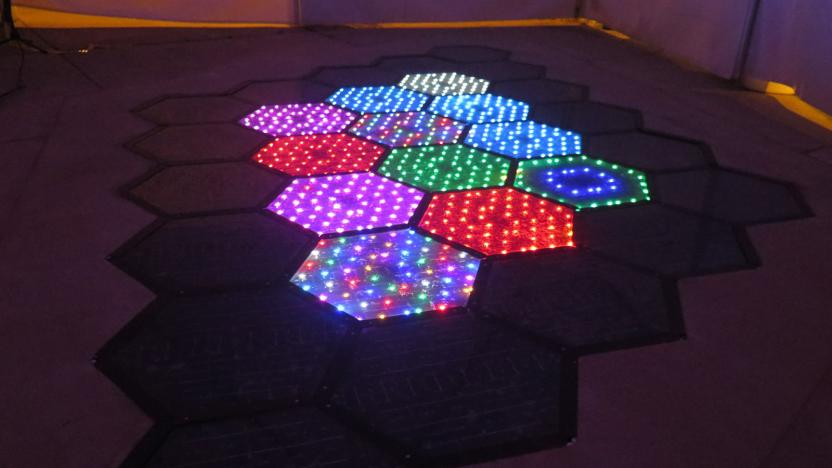
Solar road tiles get their first public test
No, that's not an elaborate new Lite-Brite kit-- that's the possible future of energy. After years of work (and some last-minute delays), Solar Roadways has installed its first public energy tiles in Sandpoint, Idaho as part of a test. On top of producing a light show, the panels will generate power for the fountain and restrooms in a public square. They have heating elements, too, so they should keep running even in the heart of winter. And if you're not sure how well they'll work in practice, you can check on them yourself -- Sandpoint has a live webcam pointed at the tiles.
Jon Fingas10.02.2016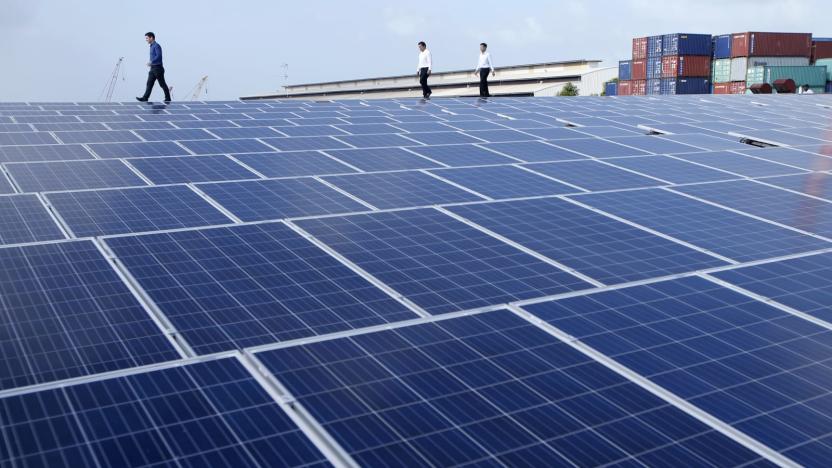
Elon Musk to show SolarCity rooftop panels October 28th
We knew that Elon Musk was working on a roof made of solar panels, and now we know when we'll see them: October 28th, according to a tweet from the real life Tony Stark. Assuming San Francisco's trademark fog doesn't make a surprise appearance too, that is. He says that the SolarCity demo will take place in the Bay area and that we'll also see how the tech integrates with his other projects, the Powerwall 2.0 in-home battery and a Tesla charging system. I'm sensing a theme here...
Timothy J. Seppala09.22.2016
Uber's self-driving cars, and more in the week that was
It's official: Self-driving cars are here. This week Uber's autonomous taxi fleet picked up its first passengers in Pittsburgh, while Ford announced that its self-driving car will have no steering wheel, gas pedal, or brakes. Ford is also working on cars that can harvest drinking water from thin air -- and then dispense it from a dashboard tap. In other auto news, the Chevy Bolt scored an EPA-certified driving range of 238 miles -- further than the base Tesla Model S. Tesla sued an oil exec for allegedly impersonating Elon Musk to steal trade secrets. And design studio Duffy London debuted the solar-powered super yacht of the future.
Inhabitat09.18.2016
Tesla's powerful new battery, and more in the week that was
Tesla makes the world's best electric cars - but they're not content to rest on their laurels. The company just launched a powerful new battery that makes the Model S the fastest production car you can actually buy. Meanwhile, autonomous vehicle startup nuTonomy has beat Uber to the punch by launching the world's first fleet of self-driving taxis in Singapore. The MIT Climate CoLab awarded honors to a new elevated Caterpillar Train that soars over traffic jams. And in Europe, Paris is planning to go completely car-free for an entire day this September, and we spotted an awesome pedal-powered school bus on the streets of the Netherlands.
Inhabitat08.28.2016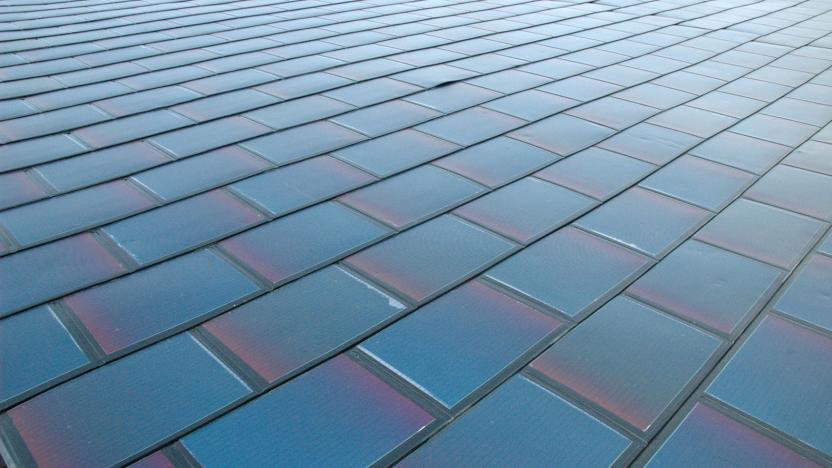
Six innovative rooftop solar technologies
By Cat DiStasio It's never been easier to give your house a solar roof. Falling manufacturing costs and increasing demand have led to a number of fascinating new solar products in recent years, including roof shingles with integrated solar cells, modular solar arrays and even efficient thermal tiles made from glass. As the technology improves and more people get turned on to the benefits of renewable energy, we expect to see even more innovative products hitting the market in the coming months and years, pushing forward the envelope for solar power production.
Inhabitat08.27.2016
Solar dish sets steamy thermal energy efficiency record
In the hunt for ever more reliable and efficient green energy production, the Australian National University (ANU) has developed a solar dish with an incredibly high sunlight-to-steam conversion rate. That's right, steam. Instead of photovolatic solar panels, which convert the sun's rays directly into electricity, the so-called "Big Dish" reflects them back at a receiver, suspended in mid-air, which converts water into steam. The gas can then be used to power a motor, or stored for long periods as molten salts. The latest breakthrough? A new receiver that's 97 percent efficient.
Nick Summers08.23.2016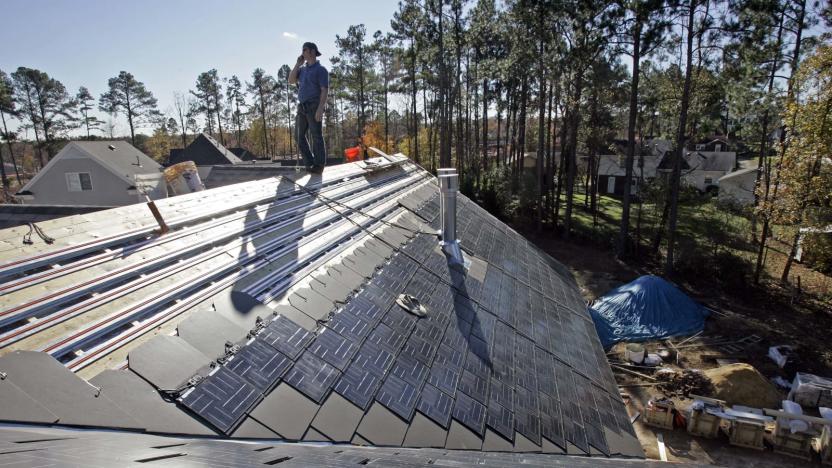
Elon Musk is working on a roof made of solar panels
Elon Musk's fondness for ambitious, out-of-left-field ideas isn't restricted to electric cars or rockets. During SolarCity's latest earnings call, the entrepreneur revealed that his energy-focused company is developing a "solar roof" -- not a roof with solar panels on it, a roof made out of solar cells. As Musk explains, people install millions of new roofs every year. Why not have them embrace solar power when they look for a replacement? Homeowners with old roofs tend not to install solar panels, since they know they'll have to rip everything off before long.
Jon Fingas08.10.2016
Tesla and Solar City agree to a $2.6 billion merger
Tesla has confirmed that it will buy SolarCity for $2.6 billion, a deal that unites two Elon Musk firms as one giant green company. The merged business will sell solar panels, Powerwall batteries to store the energy and electric cars that run on it. It's the "end-to-end clean energy" solution promised by Elon Musk in his "Master Plan Part Deux" just two weeks ago. SolarCity also revealed that it will introduce an "integrated solar and storage offering," and a solar product "focused on the 5 million new roofs installed each year in the US."
Steve Dent08.01.2016
Solar Impulse completes its round-the-world journey
In March 2015 Solar Impulse 2 took off from Abu Dhabi and tonight it has successfully returned, completing a 40,000km+ round the world trip. It managed the feat "without using a drop of fuel," becoming the first to manage the feat thanks to sunlight, piloted by Bertrand Piccard and Andre Borschberg. Its arrival is a bit delayed, partially due to some problems with heat-related battery damage, but just making the trip helps the project's goal to show off the potential of transportation powered by green energy sources.
Richard Lawler07.25.2016
Solar Impulse 2 starts the last leg of its round-the-world flight
It's all coming down to this. Well over a year after beginning its round-the-world trip, Solar Impulse 2 has embarked on the final leg of its journey. The solar-powered aircraft left Cairo early on the morning of July 24th and should reach its original starting point, Abu Dhabi, within 2 to 3 days. This certainly isn't the most arduous part of the adventure (the Pacific crossing was far more challenging). However, it'll likely be the one that everybody remembers -- it'll be the definitive proof that clean energy can be used to accomplish impressive feats.
Jon Fingas07.24.2016
Researchers discover the hidden impact of solar panel shade
A group of environmental scientists and ecologists researching the impact of solar arrays on the environment have released a new study they believe will lead to smarter farming and land use around these alternative energy sources. According to the paper published in the journal Environmental Research Letters, the microclimate around the bank of photovoltaic panels studied near Swindon in the UK changed by as much as 5 degrees Celsius, depending on the season. While this might seem like an obvious side effect of creating a big field of artificial shade, the researchers from Lancaster University and the Centre for Ecology and Hydrology are concerned about the impact on the plants and soil underneath all those solar panels.
Andrew Dalton07.14.2016
Mandalay Bay installs America's biggest solar roof
The Mandalay Bay Convention Center in Las Vegas, NV is now home to the largest roof-top solar array in America. The array consists of 26,000 individual panels and produces enough power to meet roughly 25 percent of the convention center's energy requirements. The two other largest casinos along the strip, presumably The Venetian and the Wynn, have also reportedly installed solar panels in efforts to reduce their electricity bills. The state of Nevada as a whole has set an ambitious goal of producing a quarter of its electricity from clean sources by 2025. That's no small feat given that the Bellagio and Mandalay Bay alone consume more electricity annually than all of Key West, FL, a city with a population of 25,000 but which hosts roughly 2.5 million visitors each year.
Andrew Tarantola07.08.2016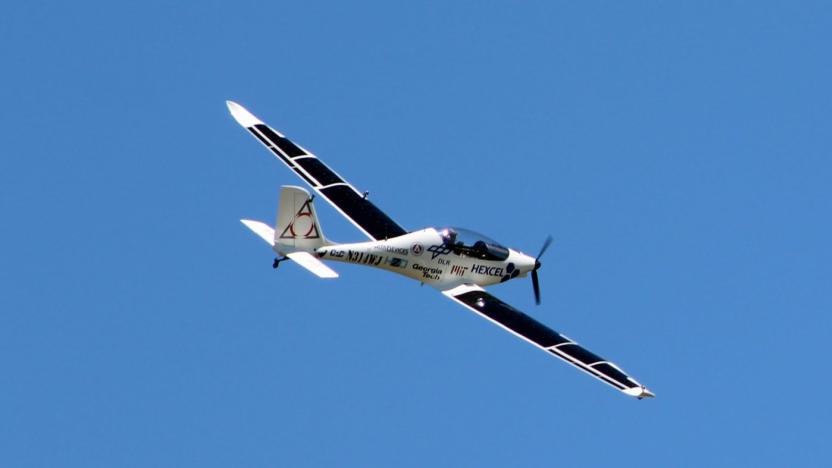
Solar aircraft test flight paves the way for internet drones
Solar Impulse 2 isn't the only Sun-powered aircraft reaching a milestone this week. Luminati Aerospace has conducted a public test flight of its prototype solar aircraft, the VO-Substrata, that represents a stepping stone toward drones that supply internet access. While this early design has a pilot, Luminati eventually wants to make pilotless vehicles that fly as high as 60,000 feet and never need to land. If all goes well, manufacturing starts soon as the end of 2016.
Jon Fingas06.12.2016